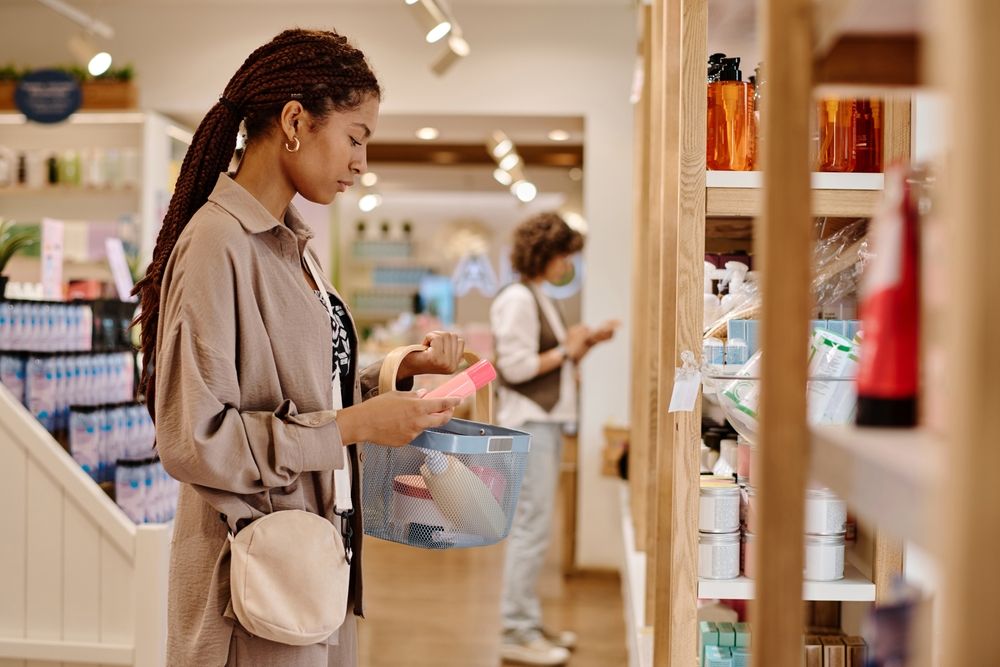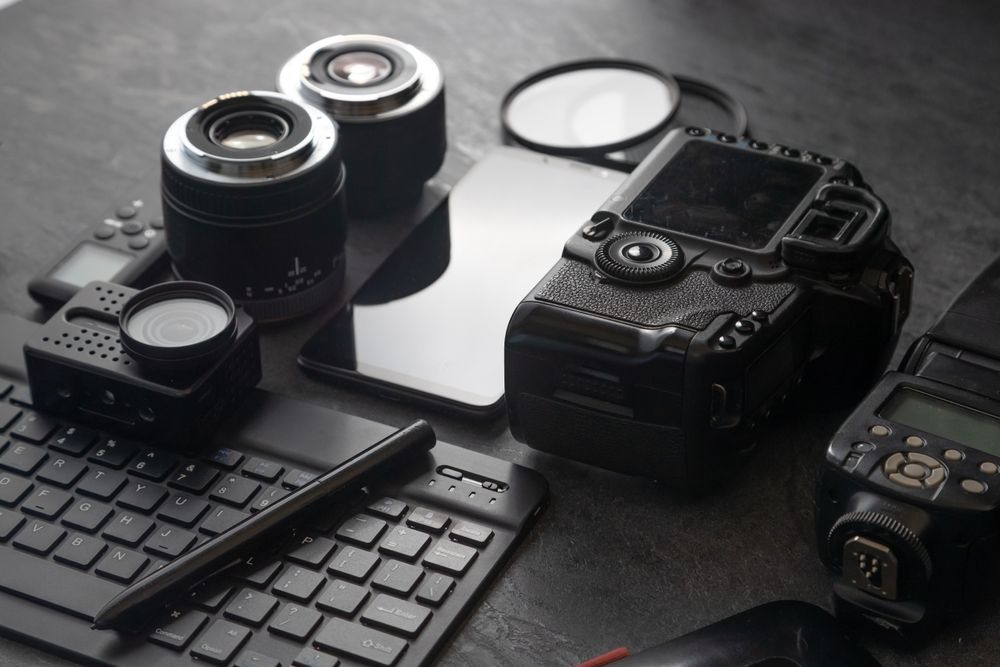Scoring a good deal on makeup can feel like a win—especially when it looks just as pretty on the shelf as its luxury counterpart. But before you stock up on discount lipsticks and bargain foundations, it’s important to understand what really comes with that lower price tag.
Not all affordable makeup is bad, and not all expensive makeup is perfect. The key is to know what to look for, what to avoid, and how to shop smart. Here's everything you should consider before adding that budget beauty buy to your routine.
Check the Ingredient List
Just because a product is cheap doesn’t mean it has to contain harmful ingredients—but many budget brands cut corners to reduce costs.
Watch out for:
-
Parabens – preservatives that may disrupt hormones
-
Phthalates – linked to reproductive issues
-
Fragrance/parfum – can trigger irritation or allergies
-
Talc – sometimes contaminated with asbestos in poorly regulated products
-
Alcohol – can be overly drying on sensitive skin
Always look for products with clear ingredient labels and avoid anything with too many unknowns or vague terms like “perfume.”
Know Where It’s Made
Different countries have different safety standards when it comes to cosmetics. Some regions ban hundreds of harmful ingredients—others do not.
Tips to stay safe:
-
Stick to brands regulated under the EU, US, or Canadian cosmetic guidelines
-
Be cautious with unbranded imports or products with no country of origin listed
-
Avoid counterfeits that mimic big brands—they often contain dangerous fillers
If the price seems too good to be true and the brand is unfamiliar, it’s worth a little extra research before applying it to your skin.
Beware of Expired or Resold Products
Cheap makeup is often found on clearance shelves, online marketplaces, or discount stores. That’s not always bad—but you should check the condition before buying.
Things to watch for:
-
Expiration dates (or lack of)
-
Broken seals or worn packaging
-
Strange smells or separated liquids
-
Damaged powder products
Expired makeup can harbor bacteria and cause breakouts, irritation, or eye infections. Always inspect products before use—especially if buying from unofficial retailers.
Understand That Pigment and Performance May Vary
Low-cost makeup sometimes sacrifices quality when it comes to pigmentation, texture, or longevity.
Common issues include:
-
Eyeshadows that don’t blend well
-
Lipsticks that fade or bleed quickly
-
Foundations that oxidize or separate
-
Patches or streaks from poor-quality applicators
That doesn’t mean all cheap makeup performs poorly—but it’s important to manage expectations. Always check reviews and swatches if possible before committing.
Do a Patch Test First
Skin sensitivity is personal. Even products with “safe” ingredients can irritate some users—especially if you have allergies, eczema, or rosacea.
Before using a new product:
-
Apply a small amount to your inner wrist or behind your ear
-
Wait 24–48 hours to see if redness, itching, or swelling develops
-
If you have no reaction, it’s safer to apply it to your face
Patch testing is especially important with foundations, serums, and lip products.
Don’t Use Eye or Lip Products From Suspicious Brands
The eyes and lips are delicate areas, and low-quality products used here can lead to infections, styes, or chemical burns.
Stay cautious with:
-
Eyeliners and mascaras with harsh ingredients
-
Fake eyeshadow palettes that mimic well-known brands
ADVERTISEMENT -
Lipsticks with no clear ingredient list or brand verification
When in doubt, skip applying suspicious products near the eyes and mouth. It’s not worth the risk.
Watch for Animal Testing and Ethical Practices
Many affordable brands are cruelty-free—but not all. Some inexpensive products are tested on animals, or sourced from unethical labor practices.
To shop ethically:
-
Look for certified cruelty-free logos like Leaping Bunny or PETA
-
Check if the brand has clear sourcing or sustainability policies
-
Avoid vague labels like “not tested on animals” without certification
Doing a quick search online can help you support ethical companies, even at lower price points.
Read User Reviews
Before you hit “add to cart,” take a few minutes to browse reviews—especially for unknown or extremely cheap brands.
What to look for in reviews:
-
Photos of real users
-
Details about product texture, performance, and wear time
-
Honest pros and cons
-
Reports of allergic reactions or side effects
Reviews on platforms like YouTube, Reddit, or trusted beauty blogs offer a more realistic picture than ads or product descriptions.
Start Small
If you’re curious about a cheap brand or product, don’t fill your entire cart right away. Start with one or two items to test how your skin reacts and whether the quality meets your needs.
Good trial items:
-
Lip gloss or tinted balm
-
Eyebrow pencils
-
Blush or single eyeshadow
Avoid starting with foundations, concealers, or skincare items unless you’ve done your research—they’re more likely to cause irritation or disappoint.
Be Wary of “Dupe” Culture
There’s a trend of finding cheap “dupes” for high-end makeup products—and some of them are excellent. But others are cheap knockoffs that mimic packaging while skipping on safety and performance.
True dupes:
-
Have similar performance and color, but come from legitimate brands
-
Are often reviewed and vetted by the beauty community
-
Still list full ingredients and meet regulatory standards
Fake knockoffs:
-
Copy logos or branding of major labels
-
Contain undisclosed or harmful ingredients
-
May sell online under deceptive listings
Stick to verified dupes from budget-friendly brands rather than counterfeits with no oversight.
Don’t Sacrifice Skin Health for a Bargain
The most important rule when buying cheap makeup? Know when to say no. If a product irritates your skin, clogs your pores, or feels uncomfortable, don’t keep using it just because it was inexpensive.
Think long term:
-
Skincare issues can take weeks (or months) to reverse
-
Treating rashes, breakouts, or infections costs more than quality makeup
-
It’s better to have fewer safe, reliable products than a drawer full of questionable ones
Always listen to your skin—it’s smarter than any beauty trend.
Cheap makeup doesn’t have to mean low quality—but it does require a more thoughtful approach. Read labels, check reviews, and trust your instincts. Some budget brands offer great value without compromising safety or performance—while others should be avoided altogether.
Whether you’re experimenting with new looks or building a beauty kit on a budget, smart shopping habits go a long way. The best makeup is the kind that makes you feel good—without sacrificing your skin’s health or peace of mind.





